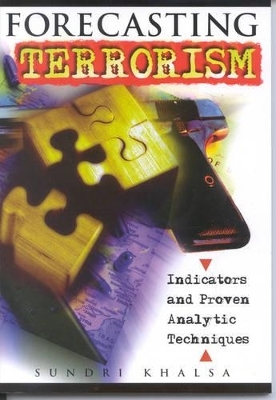
Forecasting Terrorism
Scarecrow Press
978-0-8108-5017-0 (ISBN)
Terrorist attacks happen after years of careful planning; however, these plans always leave a trail of activities—a road map to the terrorists' forthcoming actions. These indicators include terrorist travel, movement of weapons, training, target surveillance, and tests of security. This guidebook identifies 68 such indicators and shows how to analyze them using a step-by-step explanation. It also includes safeguards against 38 of the 42 common warning pitfalls that experts have identified. That analysis then yields warnings that can prevent attacks and save lives. The methodology can be applied to any intelligence topic (not just terrorism) by simply changing the list of indicators. Warning failures are rarely due to inadequate collection; they are more frequently due to intelligence that has been ignored because it is delivered with weak analysis. With this model, author Sundri Khalsa brings sophisticated analysis methodology to security forces everywhere, promising a safer world. The accompanying CD-ROM provides a website display that is the interface to this forecasting system. It also includes a 45-minute video that describes the methodology step-by-step using the website display. This methodology was characterized by the Unit Chief of the Federal Bureau of Investigation (FBI) Counterterrorism Threat Monitoring Unit as "light-years ahead," while officials in the Defense Intelligence Agency (DIA) have identified this system as "the bedrock for the evolving approach to terrorism analysis," and an "unprecedented forecasting model." This guide will be of interest to policy makers, journalists, police authorities, and concerned citizens.
Sundri K. Khalsa has served as a military intelligence officer in the United States Air Force since 1996. She created the initial version of this forecasting methodology while serving in a leadership role in a counterintelligence/counter terrorism analysis cell in Saudi Arabia and further developed and refined this approach while at the Joint Military Intelligence College. Graduating first in her class, she was awarded the National Military Intelligence Association Award at the Defense Intelligence Agency (DIA) Joint Military Intelligence College.
Part 1 List of Figures
Part 2 List of Tables
Part 3 Preface
Part 4 Acknowledgments
Part 5 Introduction
Chapter 6 How to Forecast Terrorism: Step-By-Step Explanation of the Methodology
Chapter 7 The Acid Test: Evaluation of the Methodology against the 42 Common Warning Pitfalls
Chapter 8 How to Make it Happen: Recommendations for Implementation
Part 9 Bibliography
Part 10 Index
Part 11 About the Author
| Erscheint lt. Verlag | 7.12.2004 |
|---|---|
| Verlagsort | Lanham, MD |
| Sprache | englisch |
| Maße | 181 x 257 mm |
| Gewicht | 268 g |
| Themenwelt | Sozialwissenschaften ► Politik / Verwaltung |
| Technik | |
| ISBN-10 | 0-8108-5017-6 / 0810850176 |
| ISBN-13 | 978-0-8108-5017-0 / 9780810850170 |
| Zustand | Neuware |
| Haben Sie eine Frage zum Produkt? |
aus dem Bereich

